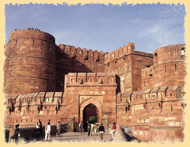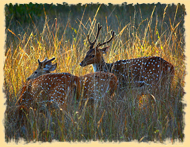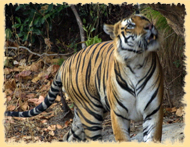Day 1: Arrive Delhi
Morning arrive at Delhi Indira Gandhi International Airport. Assist on arrival and transfer to hotel.
Overnight at hotel.
Day 02: Full day city tour of Delhi
Morning visit Old and New Delhi. 
Old Delhi, drive past Red Fort, the 300-year-old walled city built by Emperor Shah Jehan in 1648 as his capital and named after him. The magnificent Red Fort built of red sandstone dates from the very peak of the Mughal power, Opposite the fort are the black and white onion dome and minarets of the Jama Masjid, the most elegant mosque in India. Also Drive past Kotla Firoze Shah, ruins of an old fort of the 14th century with the 13 metre high Ashoka Pillar of 3rd BC. And Ghat, where Mahatma Gandhi was cremated in 1948. Drive through the old city subject to traffic restrictions.
New Delhi the new capital designed by Sir Edward Lutyens. Drive past the Presidential Palace, the Rashtrapati Bhavan and the secretariat buildings - the centre of all government activity and down the main avenue, the impressive Rajpath to the World War I memorial arch, the India Gate, the High Court Building and the Old Fort. Visit the Qutub Minar, 72 metres high and the ruins of Quwat-ul-Eslam (Light of Islam) Mosque. See Delhi’s most curious antique, the uncorroded Iron Pillar, which dates back to the 4th century AD. Visit the Birla (Laxmi Narayan) Temple, with its many idols
enjoy city sightseeing at Old and New Delhi.
Overnight stay at the hotel.
Day 03: Delhi – Jaipur
Morning after breakfast drive to Jaipur, On arrival check in at hotel.
Balance day at leisure. Enjoy a cycle Rickshaw ride through the colourful market area of Jiapur.
Overnight at hotel.
Day 04: Jaipur
 The day begins with a visit to the Amber fort, the former seat of the Rajput rulers of Jaipur. Ascending the fortress seated on elephants, wander around the beautiful palaces and visit the Shiladevi temple (which continues to be the private temple of the Royal family) with its exquisite marble carvings and silver door. The day begins with a visit to the Amber fort, the former seat of the Rajput rulers of Jaipur. Ascending the fortress seated on elephants, wander around the beautiful palaces and visit the Shiladevi temple (which continues to be the private temple of the Royal family) with its exquisite marble carvings and silver door.
Afternoon sightseeing tour of Jaipur with English speaking guide for 6 hours.
Visit the open-air royal observatory "Jantar Mantar", with gigantic, astronomical instruments, the City Palace and Museum stopping by the "Hawa Mahal" or the Palace of Winds.
Overnight at hotel.
Day 05: Jaipur - Ranthambore
Morning leave Jaipur for Ranthambore. On arrival check in at hotel.
Ranthambore National Park is one of the prime examples of Project Tiger’s conservation efforts in Rajasthan. The forests around the  Ranthambore Fort were once, the private hunting grounds of the Maharajas of Jaipur. The desire to preserve the game in these forests for sport, was responsible for their conservation, and subsequent rescue by Project Tiger. Ranthambore Fort were once, the private hunting grounds of the Maharajas of Jaipur. The desire to preserve the game in these forests for sport, was responsible for their conservation, and subsequent rescue by Project Tiger.
The Park sprawls over an estimated area of 400 sq kms. Steep crags embrace a network of lakes and rivers, and a top one of these hills, is the impressive Ranthambore Fort, built in the 10th century. The terrain fluctuates between impregnable forests and open bushland. The forest is the typically dry deciduous type, with dhok, being the most prominent tree. The entry point to the Park, goes straight to the foot of the fort and the forest rest house, Jogi Mahal. The latter boasts of the second-largest banyan tree in India. The Padam Talab, the Raj Bagh Talab and the Malik Talab are some of the lakes in the area, that attract the tiger population. They have been spotted at the edges of these lakes, and Jogi Mahal itself. Old crumbling walls, ruined pavilions, wells, and other ancient structures stand witness to the region's glorious past. The entire forest is peppered with the battlements and spillovers of the Ranthambore Fort - tigers are said to frequent these ruins, too. As a result of stringent efforts in conservation, tigers, the prime assets of the Park, have become more and more active during the day. More than in any other park or sanctuary in India, tigers are easily spotted here in daylight. They can be seen lolling around lazily in the sun, or feverishly hunting down Sambar around the lakes.
Afternoon a Game drive by Jeep / Canter will be provided to vie Wild life.
Overnight at hotel.
Day 06: Ranthambore
02 Game drive in the morning and evening will be provided to view Wild life of the Ranthambore National Park.
Overnight at hotel.
Day 07: Ranthambore – Bharatpur –Fatehpur Sikri – Agra
Morning proceed from Ranthambore to Agra enroute visiting the Bhaartpur bird Sanctuary and deserted city Fatehpur Sikri.
Start your day by bird viewing at the Bharatpur sanctuary where you can see migratory birds like Cranes, Pelicans, Geese, Ducks, Eagles, Hawks, Shanks, Stints, Wagtails, Warblers, White Ears, Flycatchers, Buntings, Larks and Pipits
Later visit Fatehpur Sikri, 35kms before Agra is Fatehpur Sikri, the abandoned red sandstone city built in the 16th century by the Mughal Emperor Akbar, one of India's greatest rulers. Remarkably broadminded for his time, this Muslim king married a Rajput princess in order to win over his Hindu subjects. The architecture at Fatehpur Sikri is a combination of Hindu and Muslim styles, expressing Akbar's vision of synthesizing the cultures.
Proceed for Agra. On arrival check in at hotel.
Overnight at hotel.
Day 08: In Agra
 Morning visit the Taj Mahal with English speaking guide. (Transfer with Golf card to Taj Mahal is not possible)With its incredible lacy white grandeur the Taj Mahal is perhaps the most perfect architectural monument in the world. To the poet Tagore it was a `tear on the face of eternity'. In memory of his wife the great Mughal emperor Shah Jehan constructed this most extravagant and incomparable monument built for love. Amazingly graceful from any angle, it is the close up detail, which is really astounding. Morning visit the Taj Mahal with English speaking guide. (Transfer with Golf card to Taj Mahal is not possible)With its incredible lacy white grandeur the Taj Mahal is perhaps the most perfect architectural monument in the world. To the poet Tagore it was a `tear on the face of eternity'. In memory of his wife the great Mughal emperor Shah Jehan constructed this most extravagant and incomparable monument built for love. Amazingly graceful from any angle, it is the close up detail, which is really astounding.
Later visit Agra Fort
Agra Fort is situated on the banks of the river Yamuna, another monumental mission accomplished by the great Mughal visionary Emperor Akbar. His son Jehangir and grandson Shah Jehan added to this imposing structure during their rule. The palaces, mosques and audience halls contained within its massive wall of red sandstone are perfect examples of blending Islamic and Hindu traditions.
Afternoon at leisure.
Overnight at hotel.
Day 09: Agra – Jhansi – Orchha - Khajuraho
Morning in time transfer to Railway station to board Shatabdi Express Traini for Jhansi. Assist on arrival at Jhansi Railway statuin and transfer to Khajuraho enrooute visiting Orchha. to Khajuraho enrooute visiting Orchha.
Orchha was founded in the 1501 AD,by the Bundela chief, Rudra Pratap Singh, who became the first King of Orchha, (r. 1501-1531) and also built the Fort of Orchha. He died in an attempt to save a cow from a lion. The Chaturbhuj Temple was built, during the time of Akbar, by the Queen of Orchha while Raj Mandir was built by 'Madhukar Shah' during his reign, 1554 to 1591.
During the rule of Mughal Emperor, Jahangir, his ally, Bir Singh Deo (r. 1605-1627) reigned here, and it was during this period that Orchha reaches its height, and many extant palaces are a reminder of its architectural glory, including Jahangir Mahal (b. ca 1605) and Sawan Bhadon Mahal. Later proceed for Khajuraho. On arrival check in at hotel.
Balance day at leisure.
Overnight at hotel.
Day 10: Khajuraho - Bandhavgarh
Morning proceed for city tour of Khajuraho and visit the Western Group of Temples.
 Khajuraho, the ancient Kharjjura-vahaka represent today a distinct pattern of art and temple architecture of its own reminding one of the rich and creative period it witnessed during the Chandella rule. It was the principal seat of authority of the Chandella rulers who adorned it with numerous tanks, scores of lofty temples of sculptural grace and architectural splendour. The local tradition lists eighty-five temples but now only twenty-five are standing examples in various stages of preservation. But for Chausath-Yogini, Brahma and Mahadeva which are of granite, all the other temples are of fine grained sandstone, buff, pink or pale yellow in colour. Khajuraho, the ancient Kharjjura-vahaka represent today a distinct pattern of art and temple architecture of its own reminding one of the rich and creative period it witnessed during the Chandella rule. It was the principal seat of authority of the Chandella rulers who adorned it with numerous tanks, scores of lofty temples of sculptural grace and architectural splendour. The local tradition lists eighty-five temples but now only twenty-five are standing examples in various stages of preservation. But for Chausath-Yogini, Brahma and Mahadeva which are of granite, all the other temples are of fine grained sandstone, buff, pink or pale yellow in colour.
Yasovarman (AD 954) built the temple of Vishnu, now famous as Lakshmana temple is an ornate and evolved example of its time proclaiming the prestige of the Chandellas.
The Visvanatha, Parsvanatha and Vaidyanatha temples belong to the time of king Dhanga, the successor of Yasovarman. The Jagadambi, Chitragupta, are noteworthy among the western group of royal temples of Khajuraho. The largest and grandest temple of Khajuraho is the immortal Kandariya Mahadeva which is attributed to king Ganda (AD 1017-29). The other examples that followed viz., Vamana, Adinatha, Javari, Chaturbhuj and Duladeo, are smaller but elaborately designed. The Khajuraho groups of temples are noted for lofty terraces (jagati) and functionally effective plans comprising of an ardhamandapa, acting as entrance generally adorned with makara torana and kakshasana, the mandapa, as the hall with antarala leading to garbha griha or sanctum. The larger temples have mahamandapas in front of the ardhamandapa. They also have minor shrines at four corners and thus categorized as pancayatana. The exterior of the temples are richly decorated. In contrast, Javari and Brahma temples are simpler creations.
Later proceed for Bandhavgarh. On arrival check in at hotel.
Overnight at hotel.
Day 12: Bandhavgarh
Bandhavgarh National Park is one of the wild life sanctuaries in the Indian state Madhya Pradesh. The national park is situated at 197 km away north-east of Jabalpur. This wild life park derived its very name from an ancient fort in the area. Bandhawgarh National Park belongs to the Vindhyan mountain ranges of central India and it boasts to have the highest density of tiger population in the country. Now there are about 46 to 52 tigers one can spot here.Wandering through the Bandhavgarh national park on an Elephant Back, the chances of seeing a tiger are quite good. Among the other wild attractions include, Nilgai, Chausingha, Chital, Chinkara, Wild Boar and sometimes a Fox or Jackal. away north-east of Jabalpur. This wild life park derived its very name from an ancient fort in the area. Bandhawgarh National Park belongs to the Vindhyan mountain ranges of central India and it boasts to have the highest density of tiger population in the country. Now there are about 46 to 52 tigers one can spot here.Wandering through the Bandhavgarh national park on an Elephant Back, the chances of seeing a tiger are quite good. Among the other wild attractions include, Nilgai, Chausingha, Chital, Chinkara, Wild Boar and sometimes a Fox or Jackal.
In the Bandhavgarh National Park the visitors can be entered on elephant back apart from the four wheelers.
Two Jeep Safaries will be provided in Bandhavgarh to view Wild life.
Day 13: Bandhavgarh - Kanha
 Morning drive on to Kanha National Park. Drive deep into this sanctuary surrounded by tall Sal trees forest World-renowned for its population of tigers, Kanha National Park excellent opportunities for observing the magnificent tiger in the wild. Kanha, with an area of 1940 sq. km (740 sq. miles), at an altitude of 460 MSL (1500 ft.) is situated in rich habitat of variety, encouraging a wide diversity of wildlife. A forest of deciduous hardwood, including sal, are interspersed with stands of bamboo and accented with colourful displays of flowering trees. The valley and plateaus are primarily meadowlands (or maidans) in pleasant contrast to the surrounding lush woodlands. Within its boundaries, Kanha protects a multitude of animals and birds, such as Chital, Chausinga (4-horned antelope) Sambar, Muntjak (barking deer), Gaur, leopard, wild-dog, gray jackal, wild boar, sloth bear and, of course, the sovereign of the Park - the Bengal tiger. Kanha also has rare and endangered Barasingha, a hard-ground-adapted swamp deer, and the black buck antelope. Morning drive on to Kanha National Park. Drive deep into this sanctuary surrounded by tall Sal trees forest World-renowned for its population of tigers, Kanha National Park excellent opportunities for observing the magnificent tiger in the wild. Kanha, with an area of 1940 sq. km (740 sq. miles), at an altitude of 460 MSL (1500 ft.) is situated in rich habitat of variety, encouraging a wide diversity of wildlife. A forest of deciduous hardwood, including sal, are interspersed with stands of bamboo and accented with colourful displays of flowering trees. The valley and plateaus are primarily meadowlands (or maidans) in pleasant contrast to the surrounding lush woodlands. Within its boundaries, Kanha protects a multitude of animals and birds, such as Chital, Chausinga (4-horned antelope) Sambar, Muntjak (barking deer), Gaur, leopard, wild-dog, gray jackal, wild boar, sloth bear and, of course, the sovereign of the Park - the Bengal tiger. Kanha also has rare and endangered Barasingha, a hard-ground-adapted swamp deer, and the black buck antelope.
. On arrival check in at hotel.
Overnight.
Day 14: Kanha
02 Jeep safaris will be provided to view Wild life.
Overnight at hotel.
Day 15: Kanha - Nagpur
Morning in time transfer to Nagpur airport to connect flight for Delhi. On arrival in Delhi no hotel envisaged. Later in time transfer to airport to connect flight for onward destination leaving during early hours on Day 16.
End of Programme / Services
|




 The day begins with a visit to the Amber fort, the former seat of the Rajput rulers of Jaipur. Ascending the fortress seated on elephants, wander around the beautiful palaces and visit the Shiladevi temple (which continues to be the private temple of the Royal family) with its exquisite marble carvings and silver door.
The day begins with a visit to the Amber fort, the former seat of the Rajput rulers of Jaipur. Ascending the fortress seated on elephants, wander around the beautiful palaces and visit the Shiladevi temple (which continues to be the private temple of the Royal family) with its exquisite marble carvings and silver door. Ranthambore Fort were once, the private hunting grounds of the Maharajas of Jaipur. The desire to preserve the game in these forests for sport, was responsible for their conservation, and subsequent rescue by Project Tiger.
Ranthambore Fort were once, the private hunting grounds of the Maharajas of Jaipur. The desire to preserve the game in these forests for sport, was responsible for their conservation, and subsequent rescue by Project Tiger. Morning visit the Taj Mahal with English speaking guide. (Transfer with Golf card to Taj Mahal is not possible)With its incredible lacy white grandeur the Taj Mahal is perhaps the most perfect architectural monument in the world. To the poet Tagore it was a `tear on the face of eternity'. In memory of his wife the great Mughal emperor Shah Jehan constructed this most extravagant and incomparable monument built for love. Amazingly graceful from any angle, it is the close up detail, which is really astounding.
Morning visit the Taj Mahal with English speaking guide. (Transfer with Golf card to Taj Mahal is not possible)With its incredible lacy white grandeur the Taj Mahal is perhaps the most perfect architectural monument in the world. To the poet Tagore it was a `tear on the face of eternity'. In memory of his wife the great Mughal emperor Shah Jehan constructed this most extravagant and incomparable monument built for love. Amazingly graceful from any angle, it is the close up detail, which is really astounding. to Khajuraho enrooute visiting Orchha.
to Khajuraho enrooute visiting Orchha.  Khajuraho, the ancient Kharjjura-vahaka represent today a distinct pattern of art and temple architecture of its own reminding one of the rich and creative period it witnessed during the Chandella rule. It was the principal seat of authority of the Chandella rulers who adorned it with numerous tanks, scores of lofty temples of sculptural grace and architectural splendour. The local tradition lists eighty-five temples but now only twenty-five are standing examples in various stages of preservation. But for Chausath-Yogini, Brahma and Mahadeva which are of granite, all the other temples are of fine grained sandstone, buff, pink or pale yellow in colour.
Khajuraho, the ancient Kharjjura-vahaka represent today a distinct pattern of art and temple architecture of its own reminding one of the rich and creative period it witnessed during the Chandella rule. It was the principal seat of authority of the Chandella rulers who adorned it with numerous tanks, scores of lofty temples of sculptural grace and architectural splendour. The local tradition lists eighty-five temples but now only twenty-five are standing examples in various stages of preservation. But for Chausath-Yogini, Brahma and Mahadeva which are of granite, all the other temples are of fine grained sandstone, buff, pink or pale yellow in colour. away north-east of Jabalpur. This wild life park derived its very name from an ancient fort in the area. Bandhawgarh National Park belongs to the Vindhyan mountain ranges of central India and it boasts to have the highest density of tiger population in the country. Now there are about 46 to 52 tigers one can spot here.Wandering through the Bandhavgarh national park on an Elephant Back, the chances of seeing a tiger are quite good. Among the other wild attractions include, Nilgai, Chausingha, Chital, Chinkara, Wild Boar and sometimes a Fox or Jackal.
away north-east of Jabalpur. This wild life park derived its very name from an ancient fort in the area. Bandhawgarh National Park belongs to the Vindhyan mountain ranges of central India and it boasts to have the highest density of tiger population in the country. Now there are about 46 to 52 tigers one can spot here.Wandering through the Bandhavgarh national park on an Elephant Back, the chances of seeing a tiger are quite good. Among the other wild attractions include, Nilgai, Chausingha, Chital, Chinkara, Wild Boar and sometimes a Fox or Jackal. Morning drive on to Kanha National Park. Drive deep into this sanctuary surrounded by tall Sal trees forest World-renowned for its population of tigers, Kanha National Park excellent opportunities for observing the magnificent tiger in the wild. Kanha, with an area of 1940 sq. km (740 sq. miles), at an altitude of 460 MSL (1500 ft.) is situated in rich habitat of variety, encouraging a wide diversity of wildlife. A forest of deciduous hardwood, including sal, are interspersed with stands of bamboo and accented with colourful displays of flowering trees. The valley and plateaus are primarily meadowlands (or maidans) in pleasant contrast to the surrounding lush woodlands. Within its boundaries, Kanha protects a multitude of animals and birds, such as Chital, Chausinga (4-horned antelope) Sambar, Muntjak (barking deer), Gaur, leopard, wild-dog, gray jackal, wild boar, sloth bear and, of course, the sovereign of the Park - the Bengal tiger. Kanha also has rare and endangered Barasingha, a hard-ground-adapted swamp deer, and the black buck antelope.
Morning drive on to Kanha National Park. Drive deep into this sanctuary surrounded by tall Sal trees forest World-renowned for its population of tigers, Kanha National Park excellent opportunities for observing the magnificent tiger in the wild. Kanha, with an area of 1940 sq. km (740 sq. miles), at an altitude of 460 MSL (1500 ft.) is situated in rich habitat of variety, encouraging a wide diversity of wildlife. A forest of deciduous hardwood, including sal, are interspersed with stands of bamboo and accented with colourful displays of flowering trees. The valley and plateaus are primarily meadowlands (or maidans) in pleasant contrast to the surrounding lush woodlands. Within its boundaries, Kanha protects a multitude of animals and birds, such as Chital, Chausinga (4-horned antelope) Sambar, Muntjak (barking deer), Gaur, leopard, wild-dog, gray jackal, wild boar, sloth bear and, of course, the sovereign of the Park - the Bengal tiger. Kanha also has rare and endangered Barasingha, a hard-ground-adapted swamp deer, and the black buck antelope.